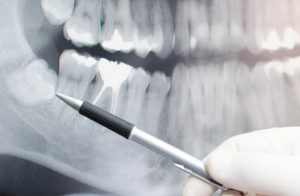 When you have to have a tooth extracted, it can be a scary experience. It often helps dental anxiety if you are fully aware of what will happen during the procedure. There are actually three different types of extractions, and they are very different. Talk to your dentist about which method of extraction is best for you. In the meantime, here’s what you need to know.
When you have to have a tooth extracted, it can be a scary experience. It often helps dental anxiety if you are fully aware of what will happen during the procedure. There are actually three different types of extractions, and they are very different. Talk to your dentist about which method of extraction is best for you. In the meantime, here’s what you need to know.
Simple Extraction
A simple extraction is the most common. In a simple extraction, the area is numbed with a local anesthetic so that you feel little or no pain. You will feel some pressure as the dentist works to extract the tooth. Although extractions are often referred to as “pulling teeth,” the tooth is not actually pulled. Instead, it is pushed down into the gum until the root breaks free of the jaw. Then, it is easily removed. Simple extractions are usually performed when a partial extraction is not appropriate and there are no complications.
Surgical Extraction
If a tooth is broken or if it is damaged below the gum line, a simple extraction may not be possible. In these cases, a surgical extraction may be necessary. In a surgical extraction you may be sedated and given local anesthesia, or you will be completely asleep for the procedure, depending on the number of teeth to be extracted and your level of anxiety. The oral surgeon then cuts out the tooth.
Partial Extraction
A partial extraction is a fairly new method that is becoming more preferred in certain circles. This is because a partial extraction leaves the root intact within the jaw. Doing so preserves the strength and health of the jaw, which is important to the overall health of your mouth. A partial extraction is especially appropriate if you plan to replace the tooth with a dental implant.
If you are needing a tooth extracted, there is no need to put off the procedure. Contact us today to schedule an appointment or to get more information.
